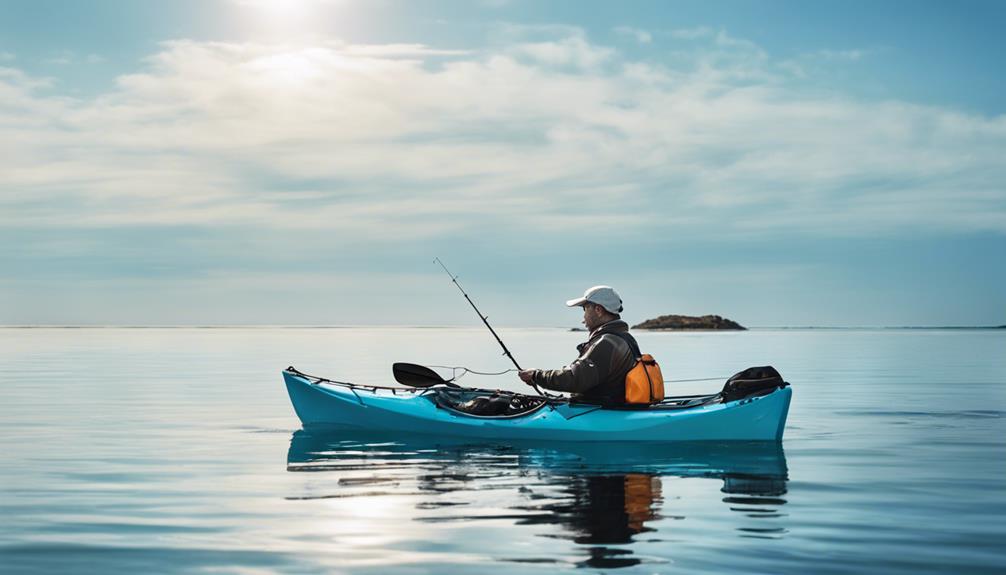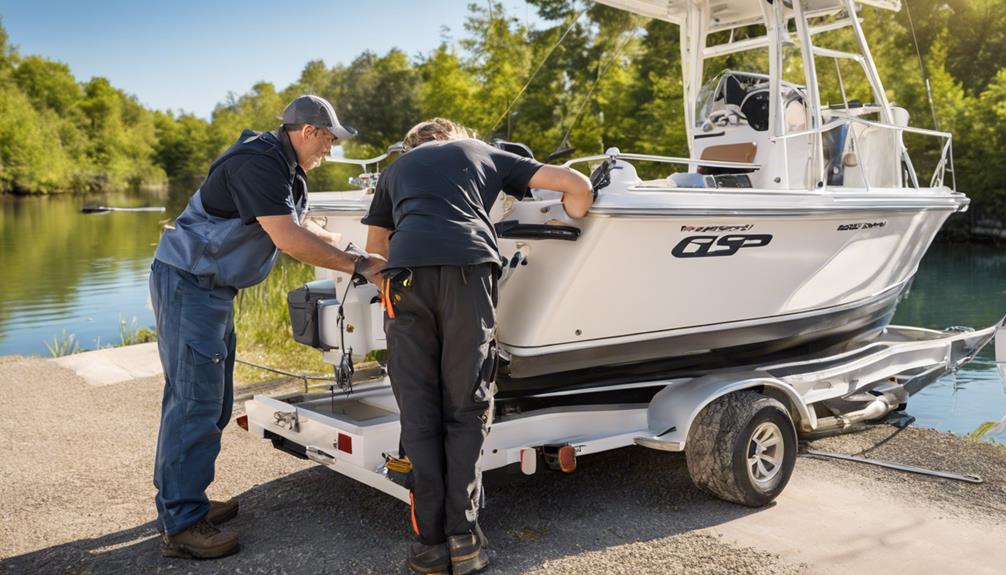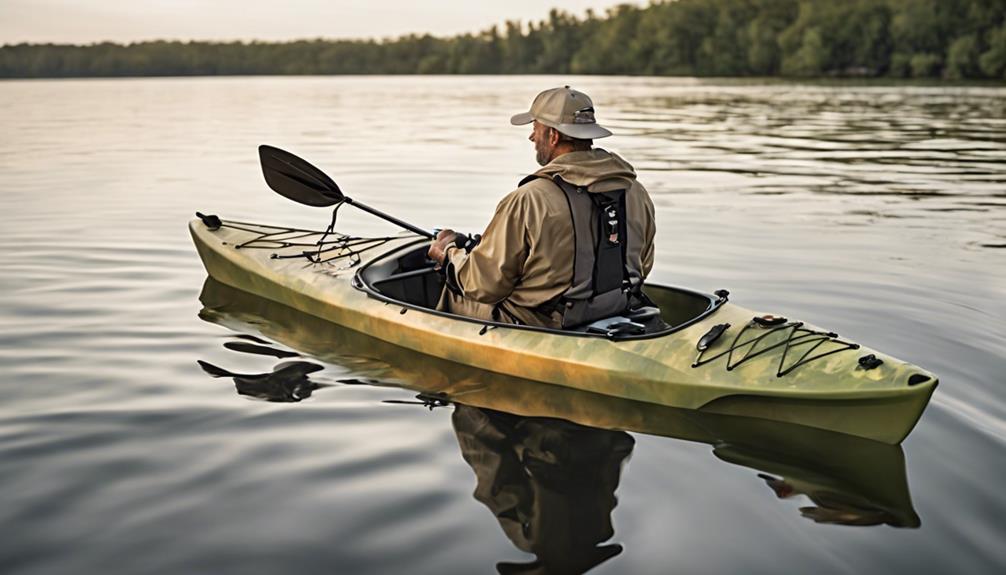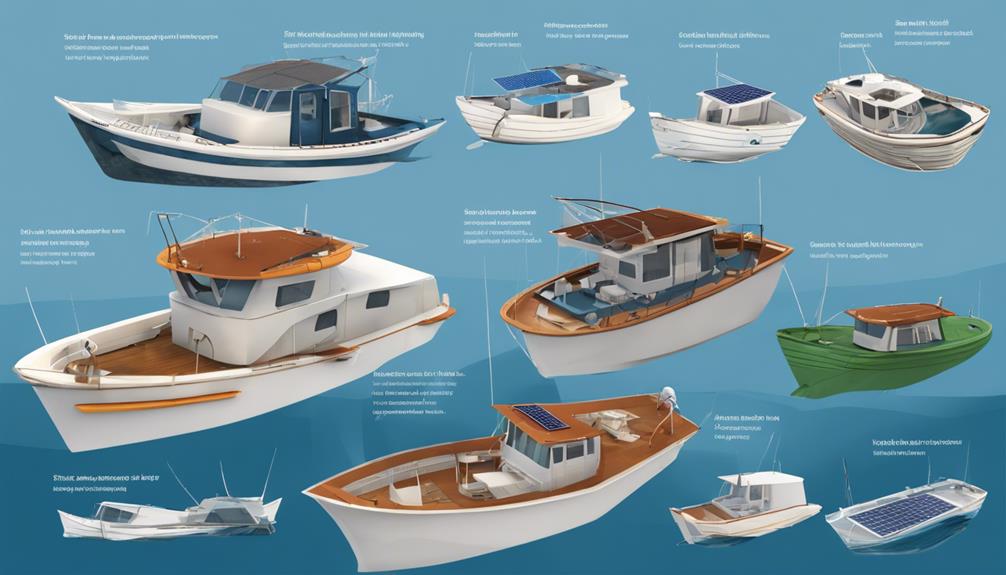When choosing a saltwater angling fishing kayak, you are faced with a myriad of options that can either enhance or hinder your fishing experience. Understanding the key features and nuances of different kayak models is crucial in ensuring you make the right choice for your needs.
From stability to propulsion systems, each aspect plays a vital role in your overall satisfaction on the water. But how do you navigate through the sea of choices to find the perfect fit for your saltwater angling adventures?
Stay tuned to uncover the essential tips and considerations that will lead you to the ideal saltwater fishing kayak for your next expedition.
Types of Fishing Kayaks for Saltwater
When choosing a fishing kayak for saltwater, consider the different types available to suit your specific needs. Saltwater angling requires specialized equipment to navigate the waves and reel in your big catch successfully. Various kayak brands offer specific models tailored to different fishing techniques commonly used in saltwater environments.
Some popular kayak brands known for their quality and durability in saltwater fishing include Hobie, Old Town, and Ocean Kayak. Each brand offers a range of kayak models designed to enhance your saltwater angling experience. Hobie, for example, is renowned for its MirageDrive pedal system, which allows for hands-free fishing while maneuvering through rough waters. Old Town kayaks are known for their stability and comfort, making them ideal for long days out on the open sea. Ocean Kayak, on the other hand, offers versatile kayak options suitable for various fishing techniques commonly used in saltwater environments.
When considering fishing techniques, think about the type of fishing you plan to do in saltwater. Whether you prefer trolling, casting, or jigging, there's a specific kayak type that can accommodate your preferred fishing style. Anglers who enjoy trolling may opt for a kayak with multiple rod holders and a stable hull design to handle the drag of trolling gear. For those who prefer casting, a kayak with ample deck space and maneuverability is essential for targeting specific spots and casting with precision. Jigging enthusiasts may benefit from a kayak with a pedal-drive system for hands-free operation while focusing on their jigging technique. Choose a kayak that aligns with your preferred fishing techniques to maximize your success on the water.
Key Features to Consider
Consider important key features when selecting a saltwater fishing kayak to ensure optimal performance and functionality. When comparing brands, look for reputable manufacturers known for their quality construction and durability in saltwater environments. Weight considerations are crucial, as a lighter kayak is easier to transport to and from the water and maneuver while fishing.
Ensure the kayak has sufficient fishing rod holders to accommodate your gear. Multiple rod holders allow you to bring along different types of rods and reels for various fishing techniques. Additionally, check for adjustable and secure rod holders to keep your equipment safe while on the water.
Comfort is key during long hours on the kayak. Look for a model with a comfortable seat that provides adequate support for your back. A padded seat with adjustable positions can make your fishing trips more enjoyable and reduce fatigue.
Before making a purchase, sit in the kayak to assess the seat comfort and positioning of the rod holders. Ensure that the kayak feels stable and that you have easy access to your gear. By considering these key features, you can select a saltwater fishing kayak that meets your needs and enhances your angling experience.
Stability and Weight Capacity
To ensure a comfortable and safe fishing experience, prioritize stability and weight capacity when selecting a saltwater angling fishing kayak. Stability tips are crucial for keeping you steady while reeling in a catch. Look for kayaks with a wider hull design as they tend to offer better stability, especially in rough waters. Additionally, kayaks with a flatter hull are less likely to tip over, providing you with a more secure platform for fishing.
Weight limits are another essential factor to consider. Exceeding the weight capacity of your kayak can't only affect its stability but also pose safety risks. Always check the manufacturer's recommended weight limit and factor in your own weight, plus the weight of your fishing gear and any additional accessories you plan to bring along. It's better to choose a kayak with a higher weight capacity than you think you'll need to ensure optimal performance on the water.
When testing a kayak for stability, consider factors like your weight distribution, movement in the kayak, and how it handles in different water conditions. By prioritizing stability and weight capacity in your saltwater angling fishing kayak selection, you can enjoy a safer and more enjoyable fishing experience.
Hull Design and Tracking
Select a saltwater angling fishing kayak with a hull design optimized for improved tracking capabilities to enhance your angling experience on the water. The hull design plays a crucial role in how the kayak performs in terms of stability control and maneuverability techniques. When choosing a kayak for saltwater angling, look for features like a V-shaped hull or a pontoon-style hull. These hull designs offer better stability control, keeping you steady when reeling in that big catch or navigating through choppy waters.
The V-shaped hull is known for its ability to cut through the water smoothly, providing excellent tracking capabilities. This design reduces the drag, making it easier to paddle straight without constantly correcting your course. On the other hand, pontoon-style hulls offer exceptional stability, allowing you to stand up and cast your line without fear of tipping over. These hull designs are ideal for anglers who prefer to fish while standing or need extra stability in rough conditions.
When it comes to maneuverability techniques, consider a kayak with a shorter length and a wider beam. These dimensions make the kayak more responsive to your movements, allowing you to navigate tight spots with ease. Additionally, features like a skeg or a rudder can enhance the kayak's tracking abilities, helping you stay on course even in windy or turbulent conditions. By choosing a kayak with a hull design optimized for stability control and maneuverability, you can enjoy a more comfortable and efficient angling experience on the water.
Storage Options and Accessories
For enhanced convenience and functionality during your saltwater angling adventures, explore the various storage options and accessories available for your fishing kayak.
When selecting storage options and accessories, consider the following:
- Rod Holders: Rod holders are essential for keeping your fishing rods secure while you navigate the waters. Look for kayaks with built-in rod holders or consider installing aftermarket rod holders for easy access to your rods when the fish start biting.
- Crates: Utilize crates for storing your tackle boxes, gear, and other essentials. Crates can be easily attached to the kayak and provide ample storage space for all your angling needs. Consider customizing your crate with rod holders or additional compartments for increased organization.
- Tackle Storage: Proper tackle storage is crucial for a successful fishing trip. Look for kayaks with dedicated tackle storage areas or consider adding tackle boxes that fit securely on your kayak. Organizing your tackle in a way that's easily accessible can make a significant difference in your fishing experience.
Remember to also consider accessories like fishfinders, which can help you locate fish underwater, giving you a competitive edge in your angling pursuits.
Propulsion Systems: Paddle Vs. Pedal
Consider your preferred method of propulsion when choosing between paddle and pedal systems for your saltwater angling fishing kayak. Paddle advantages include the simplicity of use and the ability to easily navigate shallow waters where pedals might get stuck. Paddling also provides a more traditional kayaking experience, allowing you to feel more connected to the water as you maneuver through different fishing spots.
On the other hand, pedal systems come with some disadvantages to keep in mind. While pedals can offer a hands-free fishing experience, they mightn't be as efficient in certain conditions. For example, strong currents or windy days can make pedaling more challenging compared to paddling. Additionally, pedal systems tend to be more complex than paddles, requiring maintenance and repairs that paddles may not need.
When deciding between paddle and pedal systems, think about your fishing style and the environment where you'll be angling. If you prefer simplicity and ease of use, a paddle system might be the better choice. However, if you value hands-free operation and are willing to deal with potential maintenance issues, a pedal system could suit your needs. Ultimately, the decision between paddle and pedal propulsion systems will depend on your personal preferences and fishing requirements.
Durability and Material Construction
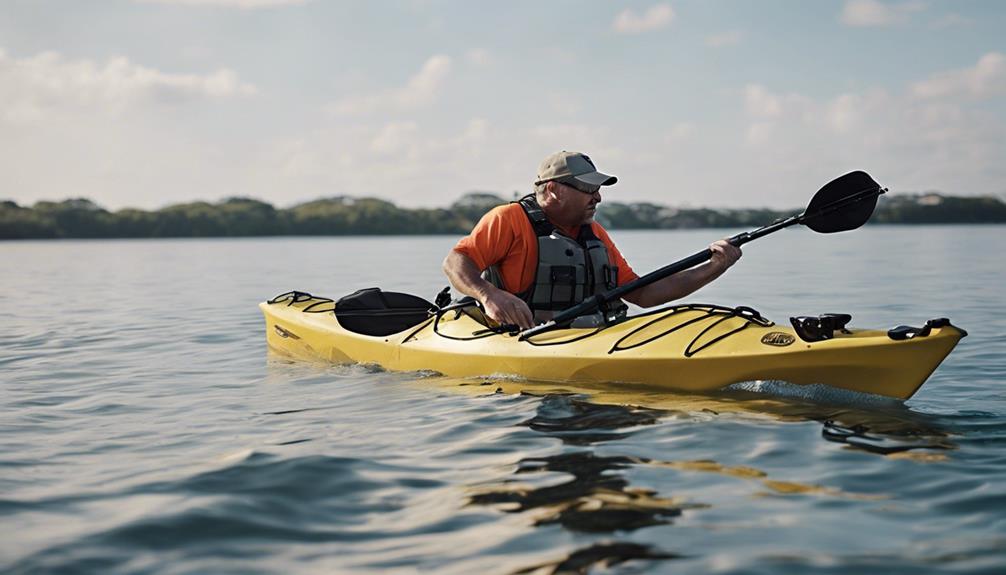
When choosing a saltwater angling fishing kayak, prioritizing durability and considering the material construction is crucial for ensuring longevity and performance on the water. Here are some key points to help you make an informed decision:
- Impact Resistance: Opt for materials like polyethylene or ABS plastic for their excellent impact resistance. These materials can withstand collisions with rocks, debris, or rough handling, ensuring your kayak stays intact even in challenging saltwater environments.
- Maintenance Tips for Longevity: Regularly rinse your kayak with freshwater after use to remove salt residue that can cause corrosion. Inspect and repair any scratches or dents promptly to prevent them from developing into larger issues. Proper storage, such as keeping your kayak covered or indoors when not in use, can also contribute to its longevity.
- Quality Materials: Look for kayaks constructed with high-quality materials known for their durability in saltwater conditions. Fiberglass and Kevlar are lightweight yet robust options that offer excellent performance and longevity. Investing in a kayak made from premium materials can save you money in the long run by reducing the need for frequent repairs or replacements.
Budget-Friendly Options and Recommendations
Picking a saltwater angling fishing kayak that fits your budget while meeting your durability needs can require some savvy decision-making. When looking for budget-friendly options, consider brand comparisons to find the best value options. Some brands offer quality kayaks at more affordable prices compared to others. It's important to read user reviews to get a sense of the overall satisfaction with a particular kayak model. User reviews can provide valuable insights into the durability and performance of the kayak in real-life fishing situations.
When considering budget-friendly options, also think about fishing gear compatibility. Ensure that the kayak you choose can accommodate the fishing gear you typically use. Some kayaks come with built-in rod holders, tackle storage areas, and other features that make them more suitable for angling. By selecting a kayak that's compatible with your fishing gear, you can enhance your overall fishing experience without breaking the bank.
To make the most of your budget, compare different brands, read user reviews, and prioritize fishing gear compatibility. By focusing on these key aspects, you can find a budget-friendly saltwater angling fishing kayak that meets your needs without compromising on quality.
Frequently Asked Questions
Can I Use a Saltwater Angling Fishing Kayak in Freshwater as Well?
Yes, you can use a saltwater angling fishing kayak in freshwater too. These kayaks offer great freshwater versatility and performance.
When considering storage, make sure it fits your needs. Also, check the transportability for ease of moving it between saltwater and freshwater locations.
With the right kayak, you can enjoy fishing in both environments without any issues.
How Do I Properly Maintain and Clean a Saltwater Angling Fishing Kayak?
To properly maintain and clean your saltwater angling fishing kayak, follow these tips.
Create a maintenance schedule to stay on track.
After each saltwater use, rinse the kayak thoroughly to remove saltwater, preventing corrosion.
Use a mild soap to clean its surface.
Store your kayak in a dry, shaded area to increase its lifespan.
Regularly check for any signs of wear and tear to address them promptly.
Are There Any Specific Regulations or Permits Required for Using a Saltwater Angling Fishing Kayak?
When fishing from a saltwater angling fishing kayak, it's essential to check for any permit requirements and fishing regulations in your area. These rules may vary between saltwater and freshwater fishing. Make sure you're up to date with what's needed to stay compliant while enjoying your fishing adventures.
What Type of Safety Equipment Should I Have on Board When Using a Saltwater Angling Fishing Kayak?
When using a saltwater angling fishing kayak, it's crucial to have essential safety gear onboard. Items like a life jacket, whistle, flashlight, and first aid kit are must-haves. Familiarize yourself with emergency procedures and always conduct a risk assessment before heading out.
Consider water conditions and ensure you're prepared for any potential challenges. Prioritizing safety equipment and being proactive in your approach can help you navigate the waters confidently.
Are There Any Recommended Techniques for Transporting and Storing a Saltwater Angling Fishing Kayak?
When it comes to transporting kayaks, you'll want to invest in a reliable roof rack system for your vehicle. Make sure to secure the kayak properly to prevent any accidents on the road.
For storage solutions, consider using wall mounts or kayak stands to keep your kayak off the ground and safe from damage. Proper storage will help prolong the life of your saltwater angling fishing kayak.
Conclusion
When choosing a saltwater angling fishing kayak, consider your needs and preferences. Look for a stable kayak with a high weight capacity, good hull design for tracking, ample storage options, and durable construction.
Decide between paddle or pedal propulsion systems based on your preferences. Keep your budget in mind and research different options before making a decision.
With the right kayak, you'll be ready to hit the water and enjoy a successful fishing trip.
